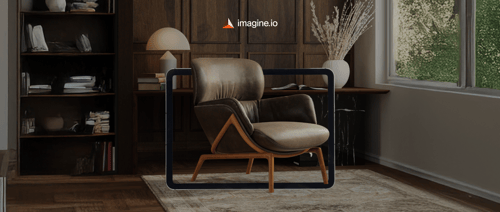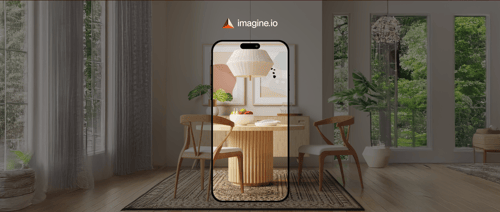Imagine you walk into a store, and without uttering a single word, the salesperson knows exactly what you want. Not just the general category, but the exact specs, the right size, your color preferences, and even what you might need in the near future. That level of intuitive service used to be fiction. Today, it’s becoming reality—not in brick-and-mortar stores, but online, thanks to predictive product configurators powered by AI. Welcome to the next frontier of digital commerce.
Get the latest updates straight to your inbox.
By clicking sign up you'll receive occasional emails from imagine.io. You always have the choice to unsubscribe within every email you receive.
What Are Predictive Product Configurators?
At its core, a predictive product configurator is a smart tool that helps customers build personalized products based on real-time data and behavioral patterns. It doesn’t just wait for a user to select options; it anticipates their needs using machine learning, customer data, and previous browsing or purchase behavior.
Think of it as a digital concierge that evolves with every interaction, turning complex configuration processes into seamless, engaging experiences.
Why Predictive Configurators Matter in 2025
In 2025, customer expectations are sky-high. They don’t just want options—they want relevance. B2B buyers are no different. They want to configure complex products quickly and accurately, without going through pages of forms or toggles. Predictive configurators:
-
Accelerate Decision-Making
Predictive tools surface the most relevant options based on previous interactions, similar user preferences, and contextual data. This helps buyers avoid information overload and focus only on choices that are likely to suit their needs.
-
Increase Conversion Rates
The faster a buyer finds what they want, the more likely they are to complete the purchase. Predictive configurators remove friction from the buying journey, improving user satisfaction and increasing the chances of a sale.
-
Reduce Returns
When customers get exactly what they expect—in terms of fit, features, or compatibility—they’re far less likely to initiate a return. Smart configuration minimizes the risk of order errors and misaligned expectations.
-
Enhance User Experience
A seamless and intuitive experience drives engagement. Predictive configurators offer a more natural, conversational, and interactive interface compared to static product forms, making the customization process enjoyable and efficient.
The AI Behind the Magic
AI isn’t just a buzzword here. It powers the real-time logic behind predictive configurators. Here are the key technologies making it possible:
-
Machine Learning Algorithms
These form the backbone of predictive configurators. They process historical and real-time user behavior, uncover hidden patterns, and continuously improve the configurator’s ability to suggest relevant product features or combinations.
-
Natural Language Processing (NLP)
NLP enables the configurator to understand and interpret user input in plain language. Instead of choosing from menus, users can type or speak their needs, and the system translates those into actionable configurations.
-
Computer Vision
For industries involving aesthetics and spatial arrangements, like home décor or fashion, computer vision allows the system to analyze user-uploaded images and recommend complementary designs or styles.
-
Recommendation Engines
Drawing from collaborative filtering and deep learning, these engines suggest product configurations or accessories that align with the user's profile or browsing journey, similar to how streaming platforms recommend content.
Real-World Brands Using Predictive Configurators Apps Across Industries
Let’s take a look at a few standout brands that are pushing boundaries with predictive configurators:
-
BMW
BMW has integrated Augmented Reality (AR) into its 3D product configurator, allowing users to personalize every aspect of their vehicle—from color and wheels to interior trims. The AR functionality lets customers visualize their configured car in their own environment. (Source)
-
Adidas
Through its "Uniforms by Adidas" platform, Adidas enables teams to design personalized uniforms. The configurator walks users through styles, colors, logos, and fits, offering a seamless and empowering customization journey. (Source)
-
Lundia
The Finnish furniture brand uses a predictive configurator powered by VividWorks to offer custom shelving solutions. Customers can modify dimensions, choose finishes, and view real-time pricing and visuals, all in a single interactive experience. (Source)
Industries Where Predictive Configurators Are Driving Real Impact
-
Furniture & Home Décor
Retailers and manufacturers can offer customers intelligent layout suggestions, design combinations, and style pairings that reflect their personal tastes, room dimensions, and lifestyle needs—all before a single product is purchased.
-
Mattress Manufacturing
Customers often struggle to articulate their comfort preferences. Predictive configurators use sleep data, posture analysis, and regional temperature inputs to recommend tailored mattress types, removing the guesswork and increasing confidence.
-
Automotive
The process of customizing a vehicle can be daunting with so many options. AI simplifies it by recommending features and packages based on use-case scenarios (city vs. off-road driving, family size, budget) and similar customer preferences.
-
Industrial Equipment
For high-stakes purchases involving technical specifications, predictive configurators ensure compatibility, safety standards, and regulation compliance, while drastically shortening the sales cycle and reducing dependency on engineering teams.
The Role of 3D Visualization
Here’s where things get even more interesting. Predictive configurators, when combined with 3D visualization platforms like imagine.io, enable customers to see their custom choices in real time. Instead of static renderings, they interact with life-like models that respond to every input:
- Change the fabric? See it live. Customers can visually explore how a material change affects the overall product look.
- Add a component? Watch it assemble in 3D. Each addition is rendered in real-time, building confidence in the buyer's selection.
- Switch layouts? Instantly preview new environments. Whether it’s a mattress in a bedroom or a couch in a living room, the configurator helps users visualize products in realistic settings.
This bridge between data and design removes guesswork and builds confidence—especially in high-value purchases.
Why Visual Customization Alone Isn’t Enough Anymore
Many companies stop at visual configuration. But visuals without intelligence are just that—pretty pictures. Predictive configurators add the missing layer of strategy. They:
- Adapt to trends and supply chain realities: If a fabric is trending or a component is out of stock, AI adjusts suggestions dynamically, avoiding disappointment and optimizing stock movement.
- Offer upsells and cross-sells that make sense: Instead of bombarding users with unrelated extras, the configurator suggests complementary products that enhance the customer’s chosen configuration.
- Help businesses gather valuable customer preference data for future planning: Every interaction adds to a repository of data, helping brands refine offerings and plan future product lines more strategically.
How imagine.io Enables Predictive Personalization
While we're not here to sell you on imagine.io, it would be remiss not to mention how we fit into this picture. imagine.io is uniquely positioned to bring together AI-driven logic and stunning 3D visuals. Our platform helps brands:
- Build smart configurators with predictive capabilities: Powered by behavioral data and AI models, our configurators evolve with every interaction.
- Deliver hyper-personalized visuals without manual design work: Say goodbye to static imagery. Our platform generates dynamic content at scale.
- Integrate configurators directly into eCommerce workflows: Smooth handoffs between browsing, configuring, and purchasing lead to higher conversion and operational efficiency.
The result? Faster decisions, happier customers, and a more efficient sales cycle.
Conclusion
Predictive product configurators represent a new frontier in digital commerce. By combining the power of AI with the flexibility of customization, they deliver faster, smarter, and more satisfying shopping experiences. For businesses, this translates to higher conversions, deeper customer loyalty, and valuable data insights.
Brands that embrace this technology today are positioning themselves at the cutting edge of eCommerce innovation.
Ready to level up your product customization game? Explore how imagine.io’s AI-powered configurator can help you personalize at scale. Book a demo today!


.gif?width=1296&height=1296&name=Untitled%20design%20(8).gif)

.png?width=500&name=How%20to%20Add%20a%203D%20Product%20Configurator%20to%20Your%20WordPress%20Website%20(Complete%20B2B%20Guide).png)
















%20(1).png?width=500&name=Why%20Exploded%20Mattress%20Views%20Matter%20(And%20How%20to%20Generate%20Them)%20(1).png)
.png?width=500&name=Best%20Shopify%20Product%20Configurator_%20How%20to%20Choose%20the%20Right%20One%20(2).png)
.png?width=500&name=Why%20Exploded%20Mattress%20Views%20Matter%20(And%20How%20to%20Generate%20Them).png)



.png?width=500&name=Best%20Shopify%20Product%20Configurator_%20How%20to%20Choose%20the%20Right%20One%20(1).png)







.png?width=500&name=How%203D%20Rendering%20Can%20Make%20or%20Break%20Your%20Industrial%20Design%20Pitch%20(1).png)








%20with%20Digital%20Twins%20and%203D%20Visualization.png?width=500&name=Optimizing%20Your%20Digital%20Asset%20Management%20(DAM)%20with%20Digital%20Twins%20and%203D%20Visualization.png)




.png?width=500&name=Styling%20Home%20Decor%20for%202025_%20From%20Global%20Influences%20to%20Playful%20Personalization%20(1).png)


.png?width=500&name=How%20Amazon%20Rufus%20Uses%20Image%20Recognition%20to%20Enhance%20Product%20Discovery%20(1).png)
